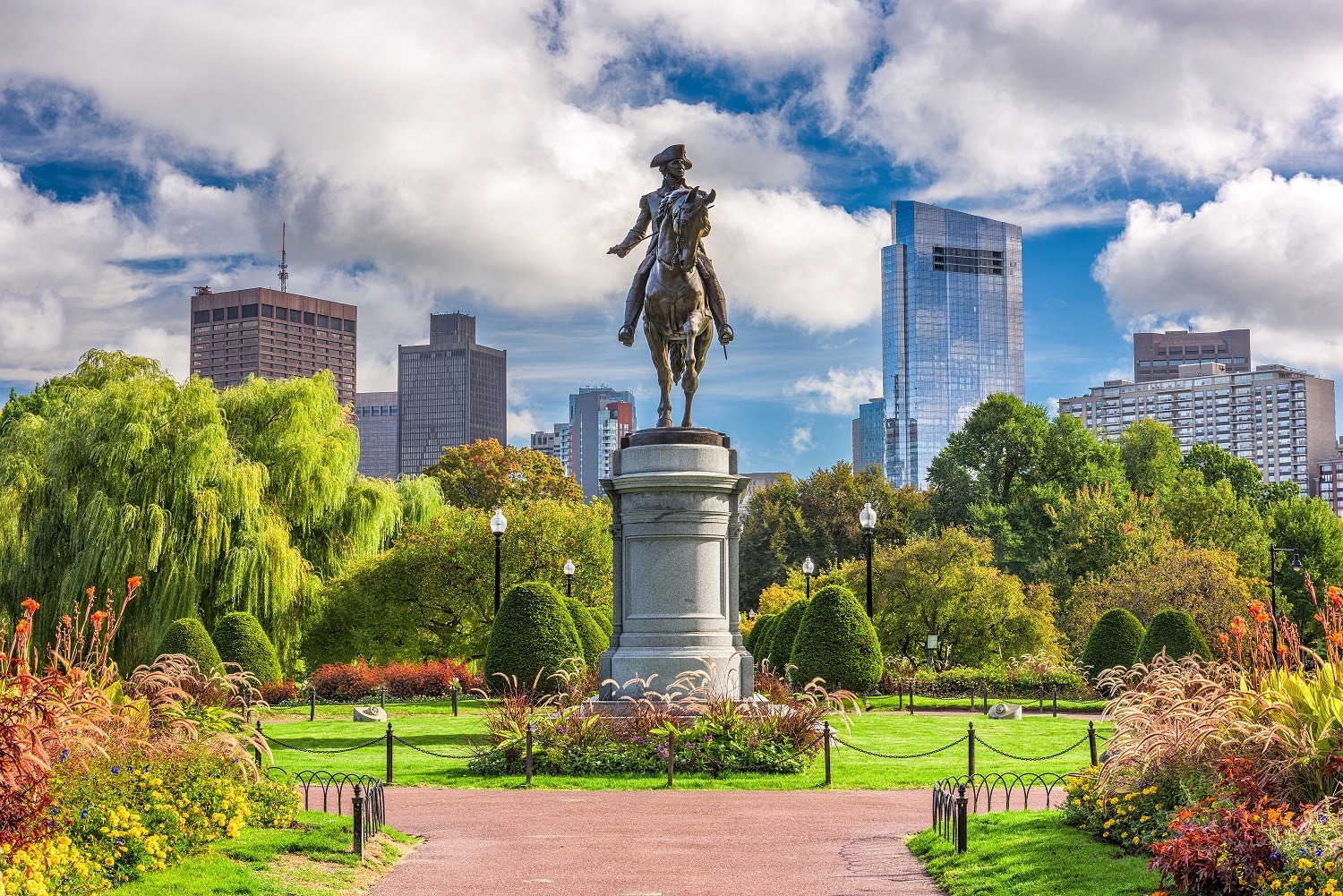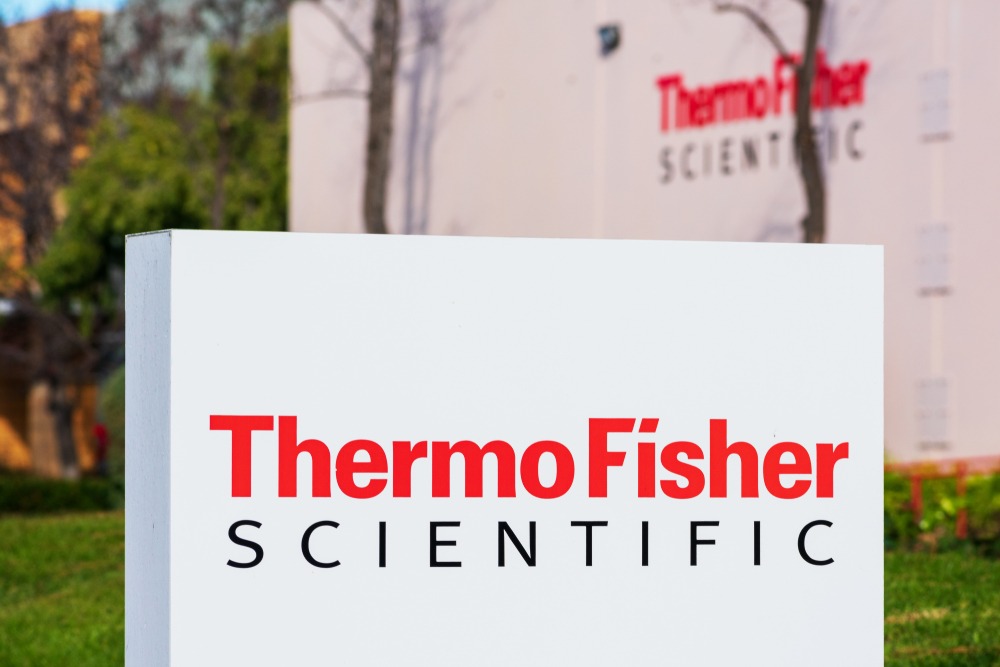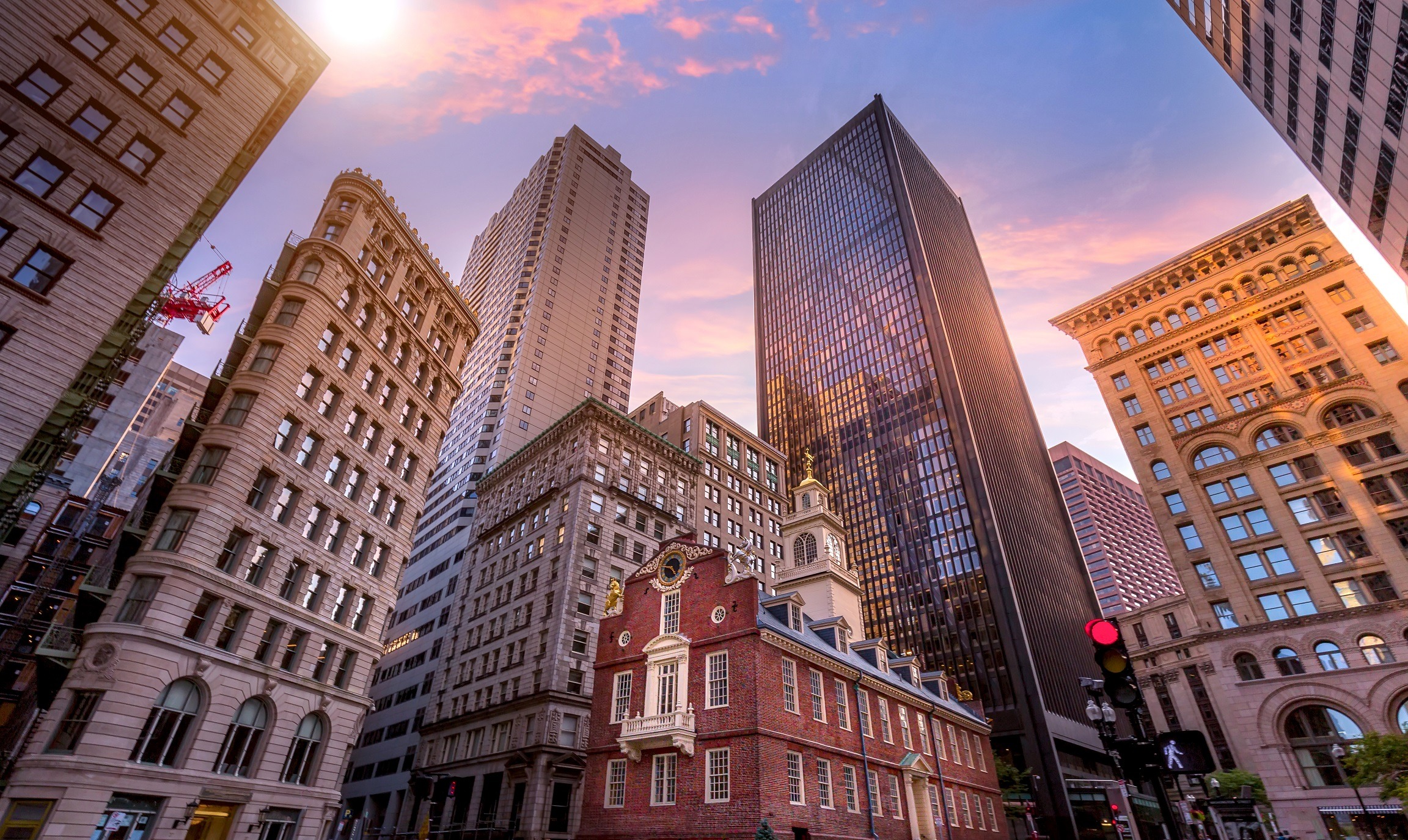
Massachusetts may be among the smallest of all the American states, but it hosts a medtech sphere capable of rivalling any in the US – even the venerated Silicon Valley region. As recently as last year, the Bay State played host to a historic event in the life sciences sector, as Cambridge-based biotech firm Moderna became one of the first companies anywhere in the world to gain regulatory approval for a Covid-19 vaccine. Jamie Bell speaks to MassMEDIC’s Brian Johnson to find out what makes Massachusetts such a desirable place to be for start-ups and multibillion-dollar firms alike.
In the late-18th century, the United States disbanded its naval fleet following the revolutionary war, selling its last remaining warship in 1785.
However, following numerous incidents of American merchant ships being targeted by pirates in the Mediterranean Sea and Atlantic Ocean over the next few years, President George Washington quickly recognised the need to build a navy capable of rivalling the maritime strength held by Britain and France at the time.
And, in 1794, he set about doing exactly that – with one of the first ships to be commissioned, the iconic USS Constitution, being built in Boston, Massachusetts.
At the time, President Washington may not have realised he was laying the groundwork for the East Coast state to become one of the world’s leading medtech arenas more than 200 years later, but Brian Johnson, president of the Massachusetts Medical Device Industry Council (MassMEDIC), believes this historic event did exactly that.
“Our strength in the medtech industry comes from a long history of advanced manufacturing, combined with being a centre for higher education and the presence of an excellent hospital system,” he says.
“And, today, this is a place that does things that are truly groundbreaking. Over the past year, for example, we’ve seen the Moderna vaccine come out of the city of Cambridge.
“That was a tremendous achievement, but it was also the result of a 20 year-long project – we’ve been putting in the hard work for decades and now we’re really starting to see the fruits of our labour.
“This state is the Hollywood of health technology and, if you’re innovating in this business, there’s no other place on Earth that you’ll be better equipped to succeed in than Massachusetts.”
The thriving medtech sector in Massachusetts
Alongside California and Minnesota, the state of Massachusetts plays host to one of the most successful medtech sectors anywhere in the US – if not the world – right now.
In 2019, MassMEDIC collaborated with accounting firm Grant Thornton to produce a report on the local industry, and found that it consistently ranks among the top areas in the country across a number of categories.
Massachusetts leads every other US state when it comes to medical product exports as a percentage of total exports, with a value of $6.1bn in 2018, and it is second only to California in terms of overall venture capital (VC) funding – demonstrating how well smaller companies and start-ups in the region typically perform.
Hospitals, nursing and residential care are the largest contributors to the state’s GDP too, indicating that the medical industry accounts for a bigger chunk of its economy compared to the likes of California and Minnesota – which rely more heavily on areas like agriculture, tourism, technology, manufacturing, and energy.
Other areas that the state performs especially well in are innovation – ranking second for medical device patents and third for FDA 510(k) approvals – and business activity – ranking fourth among US states for mergers and acquisitions in 2018 with a total value of $2.3bn.
And, with close to 25,000 people working in the sector and about 500 medical device manufacturing companies, Massachusetts also ranks third for overall employment.

“And that’s just medtech,” Johnson adds. “When you include biotech and pharma, and consider the life sciences in general, Massachusetts is without doubt the global leader.”
Johnson also claims that the sprawling, diverse state of California is often considered as two separate entities – largely because its population is about six times greater than that of Massachusetts or Minnesota – and, as such, there are actually four major medtech arenas across the US.
In terms of expertise within the field, Southern California leans towards aesthetics, ophthalmology and structural heart devices, Northern California favours robotics and digital health, and Minnesota’s strengths lie primarily in pacemaker technology, but also in implantables more generally.
“However, Massachusetts is a unique market in that we have clinical strength across the board,” Johnson says.
“We’re very strong in orthopaedics, we have a very strong robotic surgery cluster, we have an incredibly strong endoscopy market, and we have drug delivery and digital health as well.”
“So, the strength of Massachusetts is not just in its size, but in the scope of the technologies here too – we’re the driver of new tech for the world of health innovation, and it’s an enviable place to be.”
What are the reasons behind this long-standing success?
Massachusetts’ rich history
President Washington’s decision to begin building his navy in Boston set the wheels in motion for the city to become something of an American manufacturing hub throughout the 19th century.
The Boston Manufacturing Company was established in 1813 to operate one of the first major factories anywhere in the US and, over the next few decades, Massachusetts became one of the country’s most notable manufacturing centres – with a particular focus on garment production, leather goods and machinery.
The presence of some of the world’s most revered research universities, MIT (Massachusetts Institute of Technology) and Harvard, in the city of Cambridge has also undoubtedly played a critical role in building and maintaining the state’s position at the forefront of American innovation.
In 2017, MIT spent more than $950m on R&D, with 14% of this going to the life sciences sector, and Harvard spent about $1.1bn on R&D – with more than half going to life sciences – while other prominent universities in the region including the University of Massachusetts and Boston University spend hundreds of millions on R&D every year as well.
“If you compare Massachusetts to places like Baltimore or Pennsylvania, or Ohio, they were also thriving industry towns in the past – but they lost those industries and never really recovered,” says Johnson. “The reason they never recovered is because they didn’t have MIT and Harvard.
“And, MIT and Harvard are certainly the foundation for us, but we have 75 universities in Greater Boston alone, so there are new technologies and different specialities all over the place there.”
While events as far back as the 18th century and the presence of these globally-respected universities paved the way for Massachusetts to become the medtech metropolis it is right now, Johnson says a concerted effort made by the state in the 1990s to shift its focus towards the life sciences sector was also key to carrying this momentum into the present day.
“The precipitating factor there was the fact that the mainframe computing industry moved from here to Silicon Valley,” he adds. “That was a real source of frustration and anger at the state level.
“But, then, life sciences was identified and a lot of state programmes were put in place to support that industry – and that’s something that I think paid huge, huge dividends.
“In the early 1990s, medtech was mainly plastics manufacturing and general medical instruments. It was only just starting to be recognised as an industry at the time, and I think the state’s ability to read that situation correctly was tremendous.”
A hub of activity
Another way the state of Massachusetts has been able to enhance its standing in the global medtech sector is by networking successfully, and hosting some of the industry’s most prominent conferences – something that Johnson says is “extremely important” to the state.
“In normal times – and hopefully this will be the case again in the future – you can go to an event focused on life sciences literally every night of the year, except for on Christmas, and that’s huge,” he adds.
“We have had a lot of success in bringing big conferences here too. We’ve had BIOMEDevice and The MedTech Conference twice each in the past decade, which is a lot, and it serves as brand reinforcement.
“But, I think the real development of our ecosystem comes from the small networking events that happen regularly here.”
As a trade association, MassMEDIC itself plays an integral role in Massachusetts’ medical industry too.
Having been founded in 1996, it is now the largest regional medtech association anywhere in the US, and has more than 300 members – from manufacturers, product developers and suppliers, to research institutions and academic health centres.
In addition to “giving medtech a voice”, as Johnson puts it, MassMEDIC also helps to connect and educate companies in the state via the numerous events, programmes and one-to-one matchmaking sessions it runs throughout the year.
“We run an accelerator for start-ups, and we’ve had tremendous success with it over the past couple of years,” Johnson adds. “We’ve taken 35 early-stage companies through the programme already and those companies raised more than $20m last year.
“There’s a tonne of start-up activity in the state for sure, and it’s critical to the success of the industry here.
“The real economic development in high technology industries centres around R&D, and big companies tend to do a lot less R&D than smaller ones. Smaller companies are the ones that push the envelope, and then the big companies acquire them.
“I would say over the past five years we’ve seen a massive increase in the amount of medtech start-ups, and the amount of funded medtech start-ups, in the state.”
The presence of medtech sector heavyweights
The high volume of industry-leading, multibillion-dollar medical device firms that can be found in Massachusetts is a tangible reward for the region investing so much time and effort into its medtech sector over the past 30 years.
However, it also plays a central role in ensuring the state can continue to compete with California, Minnesota, and its other closest rivals in this space.
With a market capitalisation close to $200bn, total revenues of more than $32bn in 2020 and about 80,000 global employees, Waltham-based diagnostics specialist Thermo Fisher Scientific is the biggest company that currently calls the state of Massachusetts its home.
Other major firms that are headquartered in the East Coast state include Hologic and Boston Scientific in the city of Marlborough, and Biogen and the aforementioned Moderna – which are both based in Cambridge.
Aside from this, many other giants of the medtech sector have a strong presence in Massachusetts as well. European heavyweights Philips, Fresenius Medical Care and Novartis’ North American bases can all be found in the state, as can DePuy Synthes – one of Johnson & Johnson’s biggest medical device arms – and major Medtronic subsidiary Covidien.
“Almost 20 of the top 25 medtech firms worldwide are located here, or have some significant presence here, and these big companies play a huge role in maintaining the ecosystem for several reasons,” says Johnson.
“They provide a tremendous amount of workforce talent and talent development that makes the region very competitive.
“The big companies – especially if they’re headquartered here – have robust business development teams and investment branches too, and they have their talent scouts all over the state looking for new innovation.”
“And, it’s not just about having large companies, it’s about which part of these large companies you have – we’re more R&D than manufacturing, so we have the scientists in the lab, and the business executives, and the decision-makers. We certainly have the brainpower here.”
“This is growing year after year as well – just to give an example, we have about 30 million square feet of lab space being built in the state at this very moment, so we’re still seeing a dramatic increase in the amount of companies coming here.”
What does the future hold?
Massachusetts’ historic foundations in manufacturing, research and medical innovation, coupled with a well-balanced synergy between massive industry heavyweights and smaller, yet more innovative, start-ups, has helped the state reach the summit of the American medtech mountain – but staying there is an ongoing challenge, and one that hasn’t always been easy to negotiate.
A report published by market research firm IBISWorld in October 2020 indicated that, in the preceding five years, the medical device manufacturing industry in Massachusetts had “struggled financially”, with revenue falling in 2018 due to companies leaving the state, and average industry growth down 1.2% between 2015 and 2020.
And, despite the market beginning to pick up again in 2019, the report anticipated these problems worsening in 2020 due to the Covid-19 pandemic, and predicted a further drop in industry revenues of 2.2% throughout the year.
However, Johnson believes the Bay State remains in a position where it can continue to thrive and grow moving forward.

“We did see some slowing down a few years ago, but right now I would say the industry is very, very robust,” he adds.
“I just can’t emphasise enough the role momentum has played in getting us to where we are today – I grew up in Massachusetts, in the Boston area, and 30 years ago this was a very blue collar place that I would never have described as somewhere that was akin to an Austin, Texas or a San Francisco, California.
“But, today, I look around and see a city that has completely transformed into, I think, the global epicentre of innovation over the past three decades, and it’s a place that can now rival Silicon Valley in any factor that you could come up with.
“All the momentum, and all the work we’ve done to define Massachusetts as a leader in health technology and innovation, is really important, and – as a trade association – we just have to look at our business model and innovate to ensure that continues.”




